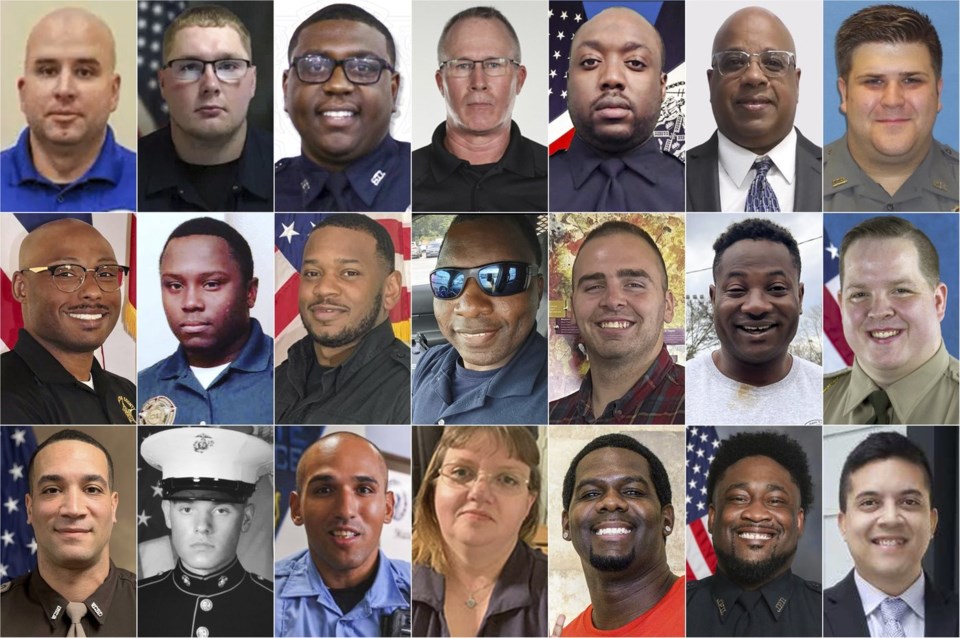A panel of experts called Wednesday for policy and cultural changes to prevent deaths linked to heat and exertion at the nation’s police academies, and insisted that urgent action is needed to save the lives of recruits.
The National Athletic Trainers' Association and the Public Safety Athletic Trainers Society convened the discussion in response to an Associated Press investigation that documented the deaths of at least 29 recruits over the last decade. The groups are drafting new guidance detailing best practices.
AP found that most recruits died of exertion, dehydration, heatstroke and other conditions tied to intense exercise — often on the first day of training, during grueling defensive tactics drills or after high-stakes timed runs on hot days.
Black recruits represented nearly 60% of those who died, a striking disparity given that federal data show Black officers make up 12% of local police forces. Many carried sickle cell trait, a condition most prevalent among Black Americans that increases the risk of serious injury following extreme exertion.
Academies should begin screening applicants for the trait, a simple $75 test that has helped drastically reduce deaths among NCAA athletes, said Traci Tauferner, an athletic trainer who has worked for years with police officers.
The screening would not disqualify applicants but rather give them and their instructors information they need to take precautions and monitor warning signs, she said.
Academies must train instructors to recognize signs of heat stroke and sickle cell complications, create a culture where recruits can report concerns without retaliation, enforce hydration protocols, and modify training based on temperatures, she said.
“We cannot let these things slide,” said Tauferner, a member of a committee of the International Association of Chiefs of Police, which also is studying the issue.
She said academies should review their exercises to ensure they reflect what officers have to perform on the job, calling a widely used 1.5-mile run “not a really relevant standard.”
Tens of thousands of police recruits who attend academies annually are uniquely vulnerable because of the stress and physical demands they face with varying levels of staff and medical oversight, said Anna August, athletic trainer for the Fairfax County Police Department in Virginia.
She noted that no national standards govern academy training, which varies dramatically based on state laws and local practices.
“The task of preventing recruit injury or death sometimes slips through the cracks, and it’s not because the instructors are neglectful,” she said. “But they’re overtasked a lot of times, and they don’t have the preventive medical training to recognize something like an exertional heat illness.”
Separately, a group that sets standards for law enforcement academies worldwide is working to develop new guidance aimed at preventing recruit deaths, its deputy director said Wednesday.
The guidance will likely include standards on the type of medical personnel academies should have on scene to respond to injuries and the training instructors receive on health risks, said Brian Grisham, of the International Association of Directors of Law Enforcement Standards and Training.
The group will consider recommending new minimum fitness standards for recruits when they enter and exit the academy and guidelines for pre-academy medical screening, he said.
Grisham said his organization is trying to find consensus in a working group that includes the police chiefs' association, the leading accreditation commission for departments, and medical personnel who work in law enforcement.
“I think the goal is to make any improvement. If we can save even a small percentage, we’re doing something worthwhile,” he said. “The goal is to come up with some uniformity."
Grisham noted that while some academies have athletic trainers or paramedics on site to respond quickly to injuries during physical training, many do not.
One recommendation, he said, could be increasing the use of athletic trainers, who have skills to prevent and respond to injuries.
Ryan J. Foley, The Associated Press



